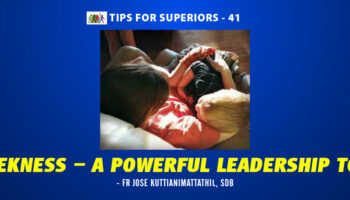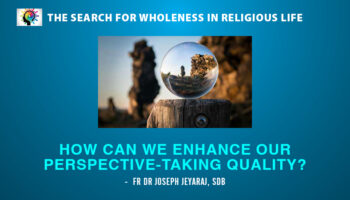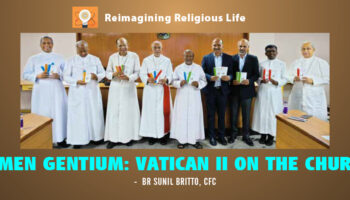NOVEMBER 3
MARTIN DE PORRES (1579-1639)
The injustice and cruelty meted out to him would have made a lesser man bitter and vindictive. Martin, instead, rose from poverty and humiliation to care for the neediest with love.
Son a Spanish nobleman of Peru, and a freed slave woman of African or local descent, Martin had the features of his mother. His father walked out on the family, leaving the wife to support the family, which she barely managed. He lived in an orphanage for a while, and then was apprenticed to a barber—a profession that included medical work, including minor surgeries. The prevailing laws prevented children of African or native stock from joining religious orders. Martin joined the Dominicans, therefore, not as a professed member, but as someone doing menial work. Later, when he was admitted as a lay brother, a companion called him a mulatto (mixed race) dog, and others ridiculed him as an illegitimate child.
Soon people realized that this Brother was extraordinarily kind and caring, and a very effective and compassionate healer. He would carry very sick people with festering ulcers, place them in his own bed, and care for them. When criticised, he answered: “Compassion is more important than cleanliness.” Once when his superior reprimanded him for bringing in sick people, Martin answered in all simplicity, “Please instruct me. I did not know that the precept of obedience is more important than that of charity.”
Gradually, the criticism and contempt gave way to profound admiration for a holy man of God whose heroic charity seemed to have no limits. People spoke of his miraculous powers—of healing, of bilocation, of reaching the sick although the doors were locked, of getting animals to obey him. By the time he died at age sixty, most people of Lima hailed him as a saint.
————————————————————————————————————————————————–
NOVEMBER 4 AND 18:
RAISSA (1883-1960) AND JACQUES (1882-1973) MARITAIN
Both were brilliant seekers, with a passion for poetry, art and social justice. They met at the University of Paris as young students, fell in love, and married. So keen was their search for meaning that they decided: If we do not find meaningful answers within a year, we will end our lives.
This search led them to philosopher Henri Bergson and to novelist Leon Bloy, through whom they discovered the Catholic faith, and the wisdom of that towering genius, Thomas Aquinas. Jacques would later be known as the most outstanding Catholic lay intellectual of the twentieth century, who would receive from the hands of Pope Paul VI the Vatican II document on the Church in the Modern World.
Raissa, an intellectual and a mystic like her husband, remained more in the background, supporting his work. By mutual consent they took a vow of celibacy, and decided to help each other on their God-search.
Jacques would later be a professor at Princeton University, the French ambassador to the Vatican, and a much-acclaimed intellectual.
Raissa died in 1960. Here is a charming quote from her journals (which show her as a true mystic): “I love the saints because they are so lovable, and the sinners because they are like me.”
She and Jacques had decided that, when one of them died, the other would join religious life. Those who knew them thought Jacques would join one of the more “intellectual” orders. Instead, he joined the Little Brothers of Jesus, and lived with them in a slum near Toulouse, France, until his death in 1973 at age 91. One of the simple convictions of this great intellectual was: “We do not need truths that serve us; we need a truth we can serve.”
————————————————————————————————————————————————-
NOVEMBER 16
IGNACIO ELLICURIA SJ AND COMPANIONS
On the night of November 15-16, 1989, towards morning, a unit of the Salvadoran army entered the campus of the University of Central America (UCA), found the Jesuits, took them out to the lawn and shot them dead. They murdered also a maid who worked on the campus and her daughter. Why?
Fr Ellicuria and the other Jesuits, in being faithful to the Jesuit Society’s decision to promote a faith that does justice, had spoken up against the structural injustice of Salvadoran society. The military government saw them as the brains behind the uprising of the rebels, and decided to eliminate them.
Father Ellicuria, rector of the University, believed that the university must respect its historical reality, and hence identify the intellectual base of an unjust society that denies rights and freedoms to the majority, educate intellectuals with a conscience, and train them to act ethically. Far from supporting violence, he wanted to bring the warring factions of El Salvador to a common table for discussion. This is not what those in power, and the super-rich whose interests they served, wanted.
” El Salvador’s civil war was brutal…the vast majority of the estimated 75,000 people who died were innocent and unarmed men, women, children, and even infants. Government forces, especially the U.S.-trained Atlacatl battalion, participated in dozens of documented massacres including… the UCA murders. The Commission concluded that the Salvadoran government and military were at fault for 85% of the human rights abuses during the war.” (Matt Cuff, blog on August 20, 2014)
————————————————————————————————————————————————-
NOVEMBER 29
DOROTHY DAY (1897-1980)
When Dorothy Day died in 1980 at age 83, she was perhaps the most admired member of the American Catholic Church.
What a life she had! Born into a middle class family and baptized into the Episcopalian Church, she gave up all religious practice as a young woman. She joined anarchists and communists and found religion as an obstacle to the social change she craved for. She lived with a man she loved, Forster Battingham, and became pregnant.
She also felt herself more and more drawn to prayer, and to the Catholic Church.
She was extremely happy to be pregnant, and even happier after the birth of her daughter, Tamar. She wanted to get Tamar baptized in the Catholic church, but Forster would not hear of it. He was against having children and totally opposed to religious practices. Dorothy realized that she had to choose between her religious faith, which was becoming stronger, and the man she loved, who would leave her if she joined the church.
After much prayer and struggle, she joined the Catholic Church. Forster left her.
A key struggle for her was: How to combine religion with social action for justice? How to bring together love and justice.
With the encouragement of a visiting French thinker called Peter Maurin, Dorothy started a newspaper called The Catholic Worker. To practise the kind of radical faith she wrote about, she started the Catholic Worker Houses, which would welcome the poor. There are 120 such Houses in the US today.
Apart from praying, writing about the poor, Dorothy Day took part in protests and sit-ins, was arrested, watched by the FBI, and even shot at. She had great admirers and staunch critics. Here are some of the convictions that led this passionate woman, who prayed much, took the vows of poverty and chastity, lived among the poor, was fascinated by the spirituality of St. Therese of Lisieux, opposed government policies that seemed to her unjust, and wrote much.
“The greatest challenge of the day is: how to bring about a revolution of the heart, a revolution which has to start with each one of us. When we begin to take the lowest places, to wash the feet of others, to love our brothers with that burning love, that passion which led to the cross, then we can truly say, ‘Now I have begun.’”
“I really only love God as much as I love the person I love the least.”

To subscribe to the magazine Contact Us





